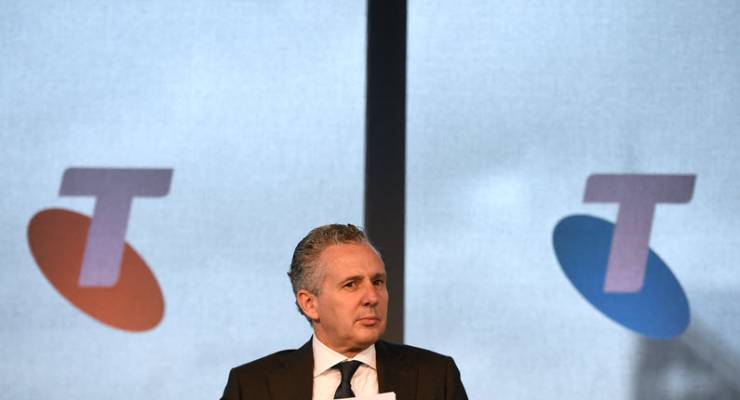
In Jakarta two weeks ago, Telstra’s unnervingly bouncy chief executive Andy Penn was talking his usual upbeat game at the rather ironically named Indonesia-Australia Digital Forum.
The sight of yet another Telstra chief venturing into Asia and talking up the company’s “global” prospects in the technology sector should have given any shareholder cause to jump right back into bed and pull the blankets over their heads.
In its attempted moves into both Asia and the tech sector in general, Telstra has largely failed. As one senior banker who has followed Telstra for decades said, “Penn sold the board on an Asian strategy and has failed to deliver it”. He also dismissed the Telstra joint venture with Indonesia’s PT Telkom, that was talked up by Penn in Jakarta as being “small change”.
Only days after Penn was promising $3 billion in technology investments and talking up the company’s venture capital operations in the US and China, Telstra would admit to the total financial disaster of its biggest post-dotcom era technology investment: Silicon Valley-based digital marketing company Ooyala. The value of Telstra’s $500 million investment in the company is now written down to zero. These new investments are intended to help plug the revenues and margin holes left by Malcolm Turnbull’s forced government buyout of the company’s high-margin legacy copper wires business now in the hands of the hapless National Broadband Network.
Still, while Penn has little to show for his vaunted Asia knowledge — he joined Telstra from insurance group AXA Asia Pacific in 2012 — the investment in Ooyala was not made on Penn’s watch. It was made in 2012 during the much-lauded reign of Penn’s predecessor David Thodey who has been a tough act to follow and whose timing stepping away from the company in May 2015 now looks to be exquisite.
In addition to leaving Telstra with a reputation as arguably the best Australian blue chip chief executive of his generation, more than doubling the company’s market value and restoring management’s relationship with staff after the roller coaster years under US import Sol Trujillo, improving its reputation with its customers and government.
When Thodey stepped away from Telstra its share price was $6.61; last night it was hovering around the $3.48 mark, where it has been for some time. The share prices climb-down and concomitant loss of tens of billions of dollars in market value began almost as soon as Penn stepped in. By last year the situation had become so dire that Telstra was forced to cut its dividend for the first time since the company listed its shares in 1998.
Penn’s situation was not helped by the fact that key Telstra executives such as Kate MacKenzie and Gordon Ballantyne, rivals for the top job, left the company soon after missing out on the CEO’s gig. New hires did not work out, most particularly Kevin Russell, the former Optus and Hutchison chief who was brought in to run the company’s cash cow consumer division. Additionally, the $12 billion deal to sell its customer access network — its unique copper wire network to NBN Co — looks to be a bad deal for Telstra Shareholders, as Thodey and former chairman Catherine Livingstone always insisted.
Shaken by a string of mobile network outages during his first year that customers and markets associate more with smaller players like Vodafone and Telstra’s main mobile rivals Optus, Penn has stepped up investment in mobiles. In an aggressive move late last year, Telstra heaped pressure on its smaller rivals by doubling the amount of data for customers, forcing rivals to follow. In a business where scale is everything, this may well gnaw at Telstra’s margins but add a further competitive advantage. It’s now clear that improving mobile speeds (with the next generation of mobile technology 5G fast coming down the pipe) and cheaper mobile data packages are beginning to hit the neither fish-nor-fowl NBN Co in the neck as many customers will increasingly avoid the expensive mess of a network in favour of ever better mobile broadband.
But none of this is really addressing the fundamental issue of how major network owners like Telstra can deal with the ever-present threat of over the top companies led by Google and Facebook which use their networks for next to nothing and still pick up the vast majority of digital revenues. Companies like Ooyala were supposed to bring these back to Telstra.
Here’s the rub for Telstra in Asia, as well: its major asset is the region’s biggest underseas cable network, once known as Reach and the only good to come out of Ziggy Switkowski’s $4.5 billion deal with Hong Kong’s PCCW in 2001. This problem of network investment versus digital revenues is certainly not unique to Telstra — it’s a global problem for the sector. But until Penn elucidates a clear strategy for Telstra to deal with this or find other ways of realising value for shareholders, the company’s stock price and value will languish and his position will likely come under increasing pressure from unconvinced markets.








There is a tradition that when Telstra buys, that signals the top of the market. BHP also signals the market top.
No idea what he’s in Jakarta for, except the gabfest. I do know that the local phone company there is installing/replacing all the landlines in peoples homes with “glass fibre”. Maybe he might update them on our technology downgrade by our very own inventor of the internet.
After nearly 3 decades of well and truly screwing the Australian public, Telstra is the epitome of a corporation not giving a bugger for the society in which it resides. Asians just aren’t as stupid as the Aussies, so I don’t see them doing well.